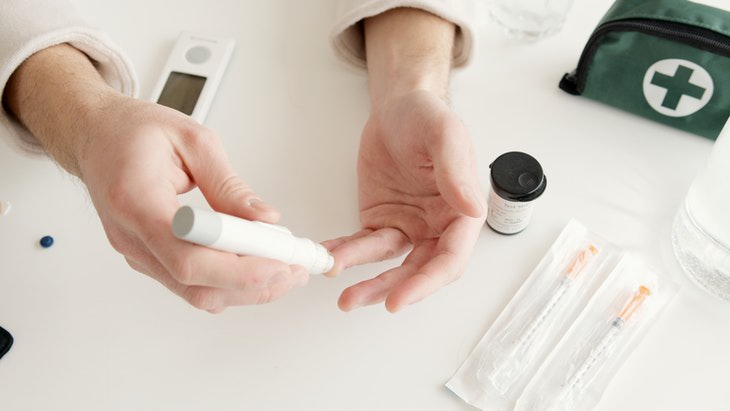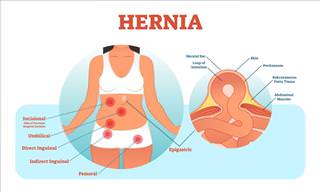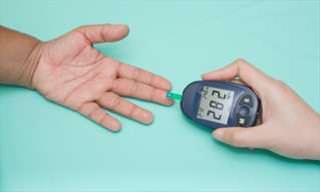The Many Faces of Diabetes
Diabetes isn’t a single condition. It’s a collection of three separate diseases - type 1 diabetes, type 2 diabetes, and gestational diabetes - all of which have a distinct cause and progression. What unites these three conditions under the umbrella term ‘diabetes’ is high glucose (blood sugar).
Glucose is the main source of fuel for the body, but in order to enter the cells, it requires insulin - a hormone produced in the pancreas. When the levels of insulin fall, or when the body doesn’t respond to insulin as it should, too much glucose is left in the bloodstream. This has a destructive effect on the body.

- Type 1 diabetes is an autoimmune condition where the immune system attacks and destroys the cells in the pancreas responsible for producing insulin called beta cells. Due to the scarcity of insulin in the body, glucose builds up in the blood. Type 1 diabetes has a hereditary component. Only slightly more than 5% of diabetics are diagnosed with type 1 diabetes, but researchers believe that this number is likely higher by another 5-15% since many people initially diagnosed with type 2 diabetes actually have type 1 diabetes according to Diabetes Daily.
- Type 2 diabetes is the most widespread form of diabetes. It accounts for over 91% of diabetes diagnoses in the US. In type 2 diabetes, the cells become increasingly resistant to insulin, so the sugar can’t get into the cells and builds up in the blood instead. The exact causes of this condition are unknown, but both environmental factors and weight gain seem to play a role.
- Gestational diabetes is usually a temporary form of diabetes that appears in 6-9% of pregnancies. Pregnancy hormones have the side effect of making cells more resistant to insulin, which is usually balanced out by increased production of insulin in the pancreas. When the pancreas isn’t able to meet that increased demand for insulin, gestational diabetes develops.
In the past years, the American Diabetes Association (ADA) and the American Association of Clinical Endocrinologists (AACE) have developed a type 1 and type 2 diabetes development model divided into various stages.
Related Article: 12 Common Diabetes Myths Debunked
The Stages of Type 1 Diabetes

Type 1 diabetes is formally divided into 3 separate stages that reflect how the immune system gradually damages the beta cells in the pancreas and how this is reflected in the development of diabetes symptoms.
Stage 1
The earliest stage of type 1 diabetes is asymptomatic. It is most often diagnosed in children whose parents suffer from diabetes during a screening antibody blood test. This blood test finds the immune system antibodies that attack the pancreas. When someone has one or more kinds of such autoantibodies, but their blood sugar levels are normal, they are diagnosed with Stage 1 type 1 diabetes.
Research suggests that nearly 100% of children diagnosed with this asymptomatic form of diabetes have developed diabetes symptoms in their lifetime, with 44% of children experiencing symptoms in 5 years after testing and 70% in 10 years.
Stage 2
At Stage 2, a person’s glucose levels start to rise as well, but they may still not experience any overt symptoms of the disease. It can take from months to years before a person experiences the first symptoms of diabetes, which is why so many people suffering from type 1 diabetes actually get misdiagnosed with type 2 diabetes.

Stage 3
Common symptoms of diabetes, such as blurry vision, increased thirst and urination, weight loss, and fatigue, start appearing at this stage. By this stage, the immune system has already damaged enough of the pancreas that it can no longer produce enough insulin to sustain the body. A diabetes diagnosis is usually established through two fasting blood sugar tests and a hemoglobin A1c test.
The Stages of Type 2 Diabetes
Four recognized stages of type 2 diabetes exist. This framework was developed based on dysglycemia, which refers to any abnormality in blood glucose levels, and it was designed to promote early diagnosis and type 2 diabetes prevention.

Stage 1
The first stage of type 2 diabetes is called insulin resistance. At this early stage of the disease, the cells in the body are only starting to become resistant to insulin. However, patients will not experience any symptoms because the pancreas is still able to make up for this by making more insulin. For this reason, blood glucose levels are within normal at the insulin resistance stage.
Stage 2
Stage 2 of type 2 diabetes is called prediabetes. The resistance of cells to insulin continues to rise, so much so that blood sugar levels begin spiking up, but not enough to be classified as diabetes. It is recommended that you get tested for prediabetes if you are 45 years old or older, especially if you are also overweight.
Prediabetes is VERY common - about 1 in 3 Americans have this condition. It’s important to note, though, that many people with prediabetes never actually get a formal diabetes diagnosis and sometimes manage to delay the onset by decades. According to the CDC, “You can prevent or delay prediabetes from developing into type 2 diabetes with simple, proven lifestyle changes.” Such lifestyle changes include a healthy diet, a physically active lifestyle, and stress management.

Stage 3
Stage 3 diabetes is the point at which a patient gets a formal diabetes diagnosis. At this stage, the patient’s blood glucose levels are consistently high, so they require medical treatment to lower glucose levels and prevent damage to the organs and the body.
Stage 4
One of the most dangerous effects of diabetes on the body is the ability of high blood sugar to damage the blood vessels. This increases one’s risk of both heart attack and stroke, which is, unfortunately, why more than half of diabetes patients pass away from one of those two conditions.
Apart from direct cardiovascular problems, the condition also weakens the blood supply to the kidneys, eyes, extremities, and other parts of the body. Over time, this can lead to advanced complications like kidney disease, nerve damage, vision and hearing loss, dementia, and severe damage to the feet.
These adverse changes don’t necessarily occur in all diabetics, and when they do, it’s usually after decades of living with diabetes. Both type 1 and type 2 diabetes have similar complications. Research points out that a combination of medical treatment and following a healthy diet and exercise routine can help patients dramatically reduce the risk of complications. Read more about these healthful choices in our article - 10 Guides to Prevent and Fight Diabetes.
Share this important information with others
 Go to BabaMail
Go to BabaMail

























































